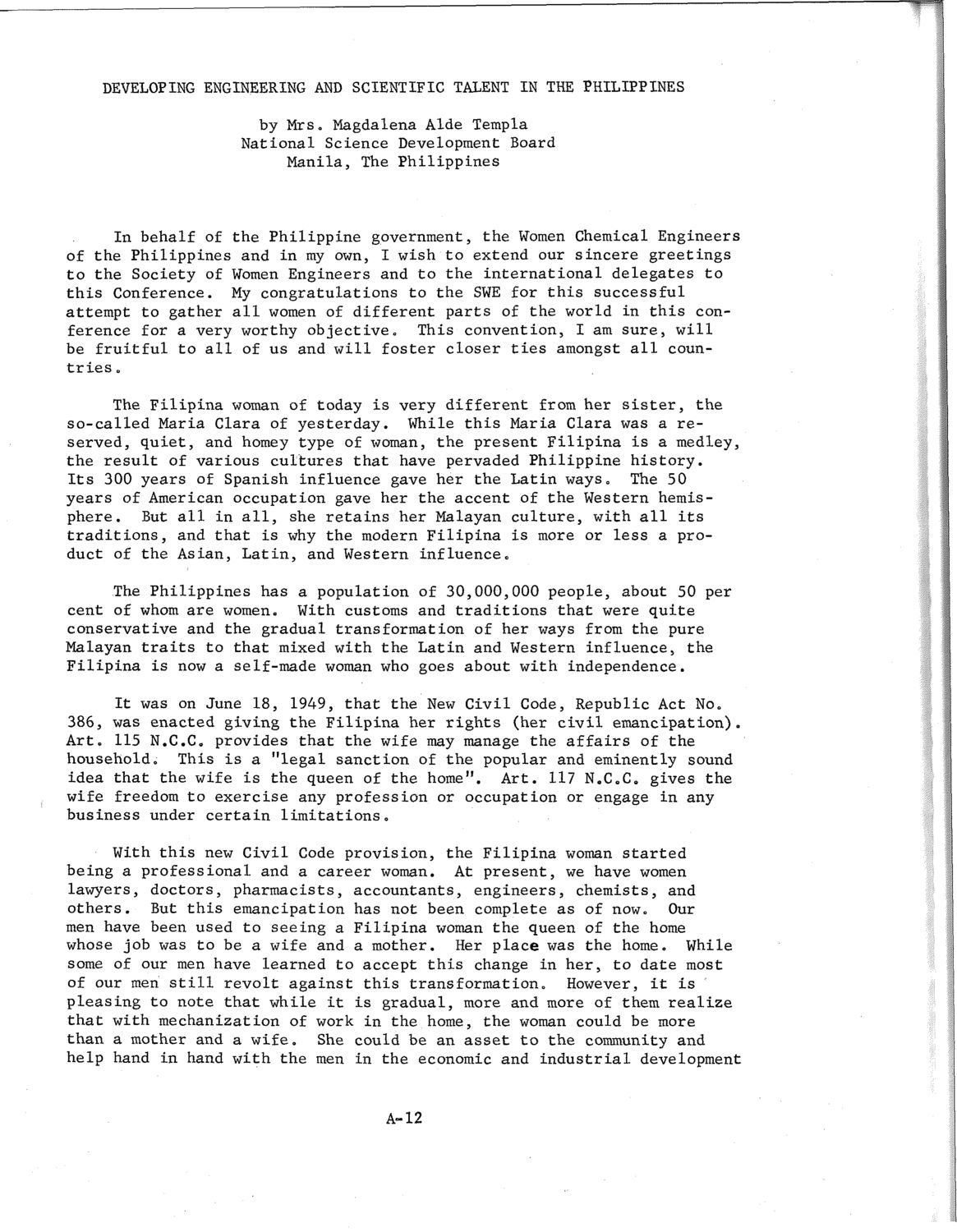| |
| |
Caption: SWE - Proceedings of the First International Conference of Women Engineers and Scientists
This is a reduced-resolution page image for fast online browsing.

EXTRACTED TEXT FROM PAGE:
DEVELOPING ENGINEERING AND SCIENTIFIC TALENT IN THE PHILIPPINES by Mrs. Magdalena Aide Templa National Science Development Board Manila, The Philippines In behalf of the Philippine government, the Women Chemical Engineers of the Philippines and in my own, I wish to extend our sincere greetings to the Society of Women Engineers and to the international delegates to this Conference. My congratulations to the SWE for this successful attempt to gather all women of different parts of the world in this conference for a very worthy objective. This convention, I am sure, will be fruitful to all of us and will foster closer ties amongst all countries. The Filipina woman of today is very different from her sister, the so-called Maria Clara of yesterday. While this Maria Clara was a reserved, quiet, and homey type of woman, the present Filipina is a medley, the result of various cultures that have pervaded Philippine history. Its 300 years of Spanish influence gave her the Latin ways. The 50 years of American occupation gave her the accent of the Western hemisphere. But all in all, she retains her Malayan culture, with all its traditions, and that is why the modern Filipina is more or less a product of the Asian, Latin, and Western influence. The Philippines has a population of 30,000,000 people, about 50 per cent of whom are women. With customs and traditions that were quite conservative and the gradual transformation of her ways from the pure Malayan traits to that mixed with the Latin and Western influence, the Filipina is now a self-made woman who goes about with independence. It was on June 18, 1949, that the New Civil Code, Republic Act No. 386, was enacted giving the Filipina her rights (her civil emancipation). Art. 115 N.C.C. provides that the wife may manage the affairs of the household. This is a "legal sanction of the popular and eminently sound idea that the wife is the queen of the home". Art. 117 N.C.C. gives the wife freedom to exercise any profession or occupation or engage in any business under certain limitations. With this new Civil Code provision, the Filipina woman started being a professional and a career woman. At present, we have women lawyers, doctors, pharmacists, accountants, engineers, chemists, and others. But this emancipation has not been complete as of now. Our men have been used to seeing a Filipina woman the queen of the home whose job was to be a wife and a mother. Her place was the home. While some of our men have learned to accept this change in her, to date most of our men still revolt against this transformation. However, it is pleasing to note that while it is gradual, more and more of them realize that with mechanization of work in the home, the woman could be more than a mother and a wife. She could be an asset to the community and help hand in hand with the men in the economic and industrial development A-12
| |